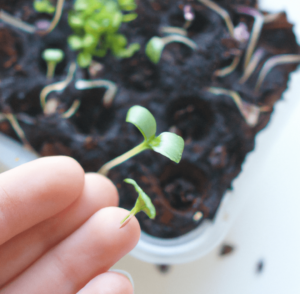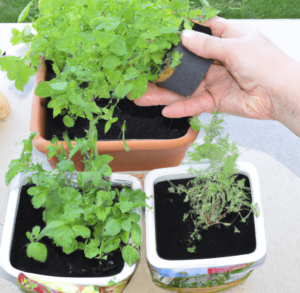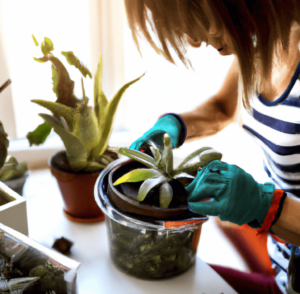Container gardening is a type of gardening that uses pots, planters, and other containers to grow plants. This method of gardening is popular among people who live in urban areas or have limited space for a traditional garden in the ground.
Unlike a traditional garden, which is planted in the ground, container gardens allow for flexibility in location and can be placed on a balcony, patio, or even indoors. This allows for gardening opportunities in places where a traditional garden may not be feasible.
Plants in a container garden have all of their roots confined to a small space, so the type of plants that can be grown in a container garden are limited. However, many common garden plants, such as flowers, herbs, and vegetables, can be grown successfully in containers.
One advantage of container gardening is the ability to control the soil and nutrients the plants receive. This allows for more precise care and management of the plants, leading to healthier growth and a more successful garden.
In addition to the plants, the type of container used is also important in container gardening. Containers should have proper drainage to prevent excess moisture, which can lead to root rot. The size of the container should also be appropriate for the plant being grown, as roots need space to grow and spread.
Overall, container gardening is a great way for people with limited space to enjoy the benefits of gardening and growing their own plants. With the right plants, containers, and care, a beautiful and successful container garden can be created.
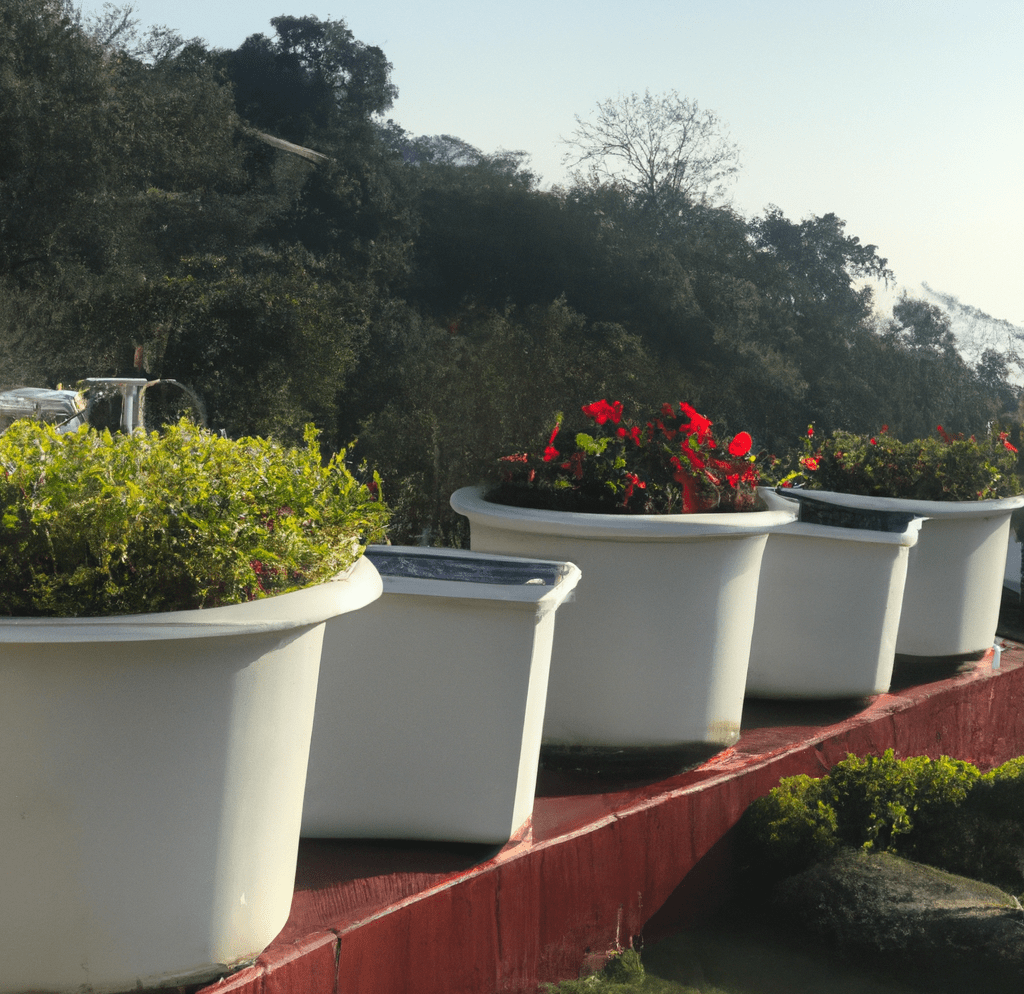
Beginner’s Guide to Container Gardening
Container gardening is a great way for beginners to get started with growing their own plants. It is a versatile and accessible form of gardening that allows you to grow a wide variety of plants in small spaces, such as on a balcony or patio.
To get started with container gardening, you will need to choose the right containers for your plants. The containers you choose should be large enough to accommodate the roots of your plants and have drainage holes to allow excess water to drain out. You will also need to choose the right soil for your plants, as well as any fertilizers or other materials that your plants may need to thrive.
Once you have your containers and materials ready, you can start planting your plants. Be sure to follow the specific instructions for each plant, as different plants have different needs when it comes to watering, sunlight, and other factors.
With proper care and attention, your container garden can provide you with a beautiful and thriving collection of plants. Whether you are growing herbs, vegetables, flowers, or a combination of all three, container gardening is a fun and rewarding way to add a touch of nature to your home.
Container Gardening
Container gardening is a type of gardening where plants are grown in containers, such as pots or planters, instead of in the ground. This type of gardening is a popular option for those who have limited space or soil conditions that are not suitable for traditional gardening.
In container gardening, plants are placed in a container filled with potting mix or soil, and then cared for in the same way as they would be in a traditional garden. Container gardens can be used to grow a wide range of plants, including flowers, vegetables, and herbs.
One of the benefits of container gardening is that it allows you to have a garden in small spaces, such as on a balcony or patio. This can be especially useful for those who live in apartments or other urban areas where space is limited.
Another advantage of container gardening is that it allows you to control the soil and other growing conditions more easily than in a traditional garden. This can be especially useful for growing plants that require specific soil conditions or have specific watering needs.
To get started with container gardening, you will need to choose the right container for your plants. The size of the container will depend on the type and number of plants you want to grow. Make sure to choose a container with drainage holes to prevent the soil from becoming waterlogged.
Once you have selected a container, fill it with potting mix or soil, and then plant your seeds or seedlings according to the instructions on the seed packet or plant label. Water your plants regularly and provide them with the necessary sunlight and nutrients to help them grow.
With proper care, your container garden can provide you with beautiful flowers, delicious vegetables, and fresh herbs to enjoy.
Tips for Container Gardening
Container gardening is a popular method for growing plants in small spaces or for those who want to bring a touch of nature to their porch or patio. By using pots or other containers, gardeners can grow a wide variety of plants, from vegetables and herbs to flowers and shrubs. Here are some tips for success in container gardening:
- Choose the right containers: Pots come in a variety of sizes, shapes, and materials, so choose ones that will fit your space and the plants you want to grow. Make sure the pots have drainage holes to prevent waterlogging, and consider using a potting mix specifically designed for container gardening.
- Select the right plants: Not all plants are suitable for container gardening, so choose ones that are appropriate for the amount of light and space you have available. Consider using dwarf or compact varieties of plants, and group plants together with similar light and water requirements.
- Provide proper care: Regular watering, fertilizing, and pest control are essential for the success of your container garden. Water plants as needed, and use a balanced fertilizer to provide the nutrients they need to grow. Keep an eye out for pests and diseases, and treat them promptly to prevent them from spreading.
- Use creative design: Container gardens can be a fun and creative way to add color and interest to your outdoor space. Consider using a variety of containers and plants to create a visually appealing display, and use accessories such as trellises, stakes, and decorative objects to add extra charm. Experiment with different layouts and combinations to find what works best for you.
Vegetables and Container Gardening
Growing vegetables is a popular and rewarding hobby for many gardeners. Vegetables can be grown in the ground or in containers, making it possible to have a garden even in small spaces or in areas with poor soil. Container gardening is a type of gardening that involves growing plants in pots, planters, or other containers. This allows gardeners to control the soil and conditions in which their plants grow, making it easier to grow a variety of vegetables in a small space.
To grow vegetables in containers, it is important to choose the right containers and soil. Containers should be large enough to accommodate the roots of the plants and have adequate drainage holes to prevent the soil from becoming waterlogged. Soil for container gardening should be light and well-draining, with a balanced mix of nutrients to support plant growth.
Once you have chosen the right containers and soil, it is time to select the vegetables you want to grow. Some popular vegetables for container gardening include tomatoes, peppers, lettuce, and herbs. These plants can be easily grown in containers and provide a bounty of fresh produce throughout the growing season.
With the right containers, soil, and plants, you can successfully grow a variety of vegetables in your own container garden. Whether you have a large backyard or a small balcony, container gardening allows you to enjoy the benefits of growing your own produce.
Plants for Ecosystem
Plants are a vital part of our ecosystem, providing oxygen, beauty, and food. One popular way to grow plants is through container gardening, which allows individuals to grow plants in pots or other containers rather than in the ground. This method is especially useful for individuals who live in urban areas or have limited outdoor space.
Container gardening is a great way to grow a variety of plants, including vegetables and flowers. When planting in containers, it is important to choose the right size and type of container for the specific plant you are growing. Additionally, be sure to use high-quality soil and provide adequate sunlight and water for your plants.
Vegetable plants are a popular choice for container gardening, as they can be easily grown in pots or raised beds. Some popular vegetables for container gardening include tomatoes, lettuce, peppers, and herbs.
Flower plants are also a popular choice for container gardening, as they add color and beauty to outdoor spaces. Some popular flowers for container gardening include petunias, impatiens, and marigolds.
Overall, container gardening is a fun and rewarding way to grow plants and bring life to your outdoor space. Whether you are looking to grow vegetables, flowers, or a mix of both, there are endless possibilities when it comes to container gardening.
Plant belongs to Kingdom Plantae
A plant is a living organism that belongs to the kingdom Plantae. They are typically green in color due to the presence of chlorophyll, which they use to photosynthesize light into energy. Plants are capable of growing and reproducing, making them an important part of the natural world. Gardening is the practice of growing plants, often in a container or a designated area of land. This can be done for a variety of reasons, such as for aesthetic or decorative purposes, or to produce food or medicine. Gardening can be a relaxing and enjoyable hobby, as well as a way to connect with nature and improve the environment.
Container gardening is a popular form of gardening in which plants are grown in containers, such as pots or planters, rather than in the ground. This allows for greater flexibility in terms of location and can be a convenient way to grow plants in small spaces or in areas with poor soil quality. Container gardening can be done indoors or outdoors, depending on the plants and the climate.
Containers
Containers are a popular way to grow and display plants in a home or garden setting. They come in a variety of shapes and sizes, including tubs, hanging baskets, and pots. One advantage of using containers is that they can be easily moved around to different locations, allowing for flexibility in the placement of plants. This is especially useful for plants that require specific light conditions or for creating visual interest in a garden by grouping plants together in different containers.
The size and type of container used will depend on the size and type of plant being grown. For example, larger plants may require a larger tub or pot, while smaller plants can be grown in hanging baskets or smaller pots. It is important to choose a container that is the appropriate size for the plant, as a container that is too small can limit the plant’s growth.
The material of the container can also be important. Terra cotta, ceramic, and plastic containers are all popular options. Each material has its own benefits and drawbacks, so it is important to consider the specific needs of the plants being grown when choosing a container. For example, terra cotta pots can dry out quickly, so they may be better suited for plants that prefer drier soil.
In addition to providing a space for plants to grow, containers can also add visual interest to a garden or home. Hanging baskets, for example, can be used to display plants at different heights, creating a vertical element in the garden.
Overall, containers are a versatile and convenient way to grow and display plants in a home or garden setting.
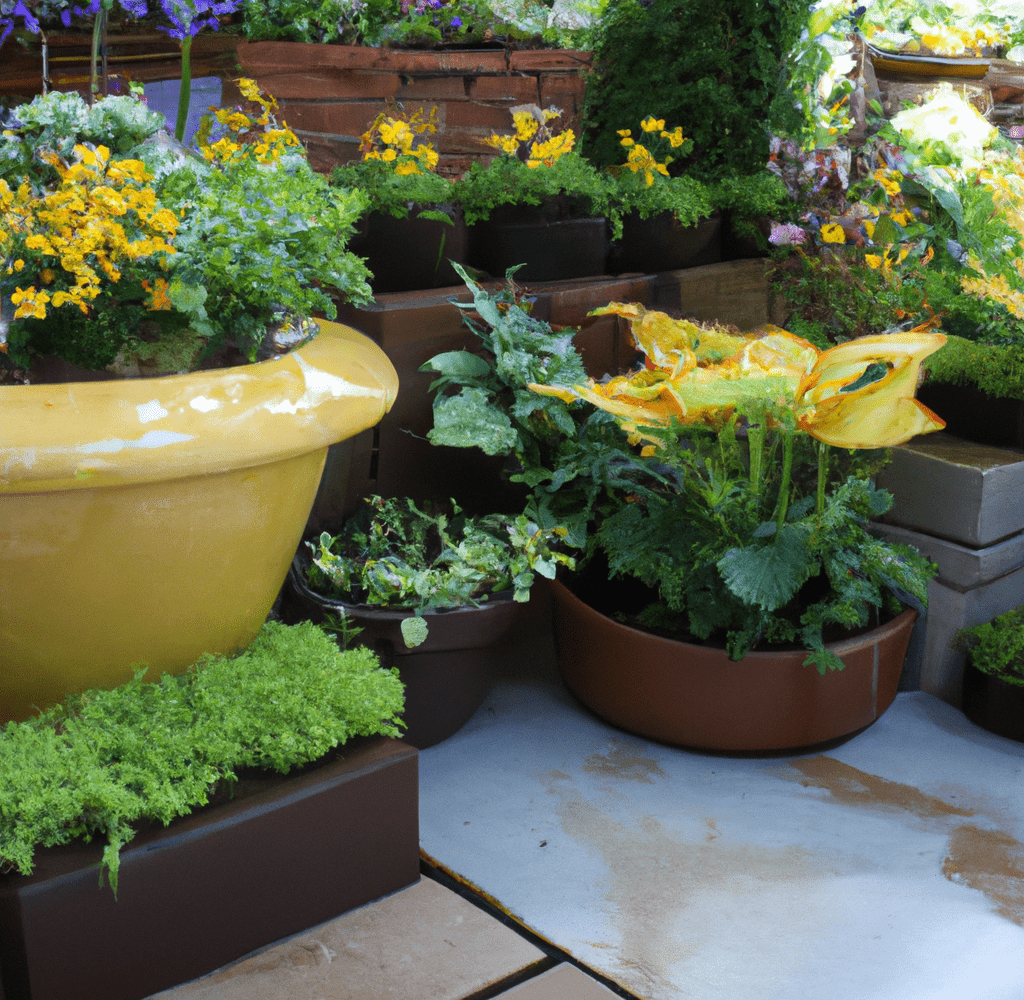
Flowers
Flowers are a type of plant that are often grown in gardens for their colorful and fragrant blooms. Some flowers, such as lavender and rosemary, are also used as herbs for their medicinal and culinary properties. Others, like sunflowers and marigolds, are grown as vegetables for their edible seeds and petals.
Some flowers, such as roses and orchids, are grown as ornamental plants in gardens, while others, such as cherry blossoms and palm trees, are grown as trees. Flowers play a vital role in the ecosystem, providing food for pollinators like bees and butterflies, and helping to reproduce and spread seeds for other plants.
Bottom Line: Container Gardening Maximizes Space and Soil
Container gardening is a method of growing plants in containers rather than in traditional garden beds. Containers can be made of a variety of materials, including pots, barrels, and baskets, and can be any size or shape. Container gardening is a useful technique for gardeners with limited space or poor soil, as it allows for plants to be grown in a controlled environment. It is also a good option for gardeners who want to bring plants indoors or who want to grow plants on a balcony or patio. Container gardening requires careful planning and attention to ensure that the plants have the right amount of light, water, and nutrients.
If you’re interested in container gardening, you may also be interested in companion planting gardening and conventional gardening.


